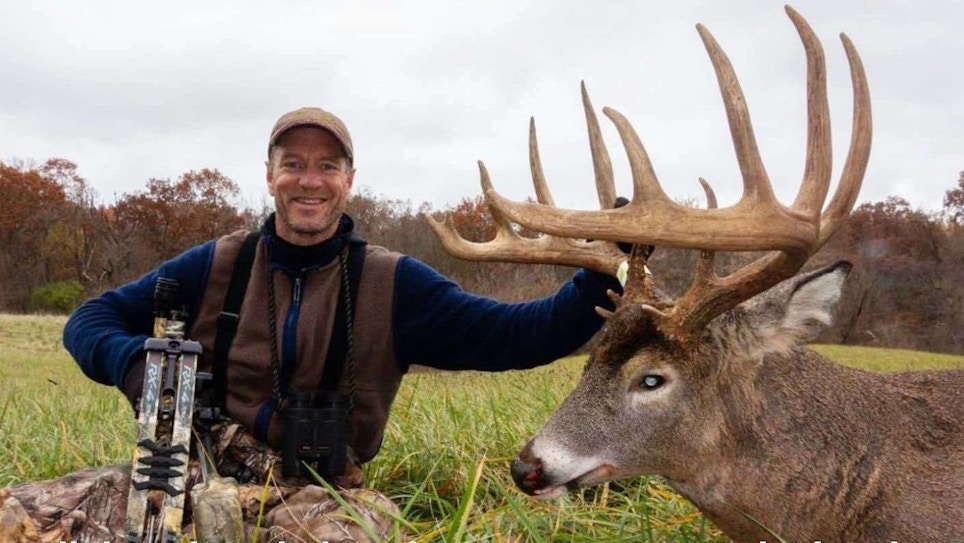
Bill Winke shot this tremendous Iowa whitetail on Nov. 12, 2021. He killed the buck on a ridge used by whitetails for bedding. He spotted the buck previously on the same ridge October 26 and 30, as well as November 4 and 5.
Each hunter has his or her own level of commitment when it comes to pursuing big game, and in the case of well-known whitetail bowhunter Bill Winke, he implemented a system this fall that greatly reduced his chances of spooking deer while entering and exiting his treestands.
After selling his farm in southern Iowa, Winke is now leasing land in northern Iowa. He also sold Midwest Whitetail, the popular online hunting show and website, and for the past two hunting seasons he’s been enjoying his time pursuing mature whitetails solo — meaning no cameraman in the field with him at all times.
Winke is staying connected to the whitetail community and his fans via Instagram (winkebill) and his website (www.billwinke.com). (FYI: If you dream of someday owning a top-notch whitetail property, you’ll enjoy Winke’s incredible story about how he put together his farm — one of the best in the country — in southern Iowa. He goes into great detail about his journey; check it out on his website. The story is broken up into seven parts, and trust me: After you start reading it, you won’t be able to stop.)
I was recently listening to a podcast where Winke was telling the story about the buck shown above, and he explained how he reduced the chances of spooking whitetails after dark and before dawn by sleeping in the woods. Wait, what?! Did I hear that correctly? Yes.
Winke’s System to Reduce Bumping Whitetails
Winke’s leased property sets up with whitetails bedding high on hardwood ridges and feeding on agricultural fields at lower elevations. The problem with this scenario is access, especially for morning bowhunts. Winke could enter the property only from the lower elevations, meaning in the morning he’d likely spook feeding whitetails in the dark as he tried to bypass them on his way to the ridges. In a similar way, if he hiked into the forest during midday and set up a treestand for an afternoon/evening sit, he’d likely spook whitetails on his only exit, which was down toward the ag fields.
To solve this problem, Winke decided to hike onto the ridges only during midday. Whitetails were typically bedded during this time, and Winke explained during the podcast that it was evident deer would tolerate a bit of intrusion as he sneaked passed and around them. The most important part of Winke’s unique system was packing in the camping gear needed to spend the night in the woods. Doing so meant he avoided hikes out of and into the woods during the dark, near the ag fields, where bumping deer was almost a sure thing.
As you can see from the Instagram photos below, Winke didn’t set up an elaborate, comfortable camp. Just the opposite. Read the Instagram captions from Winke with his pics and you’ll understand his system.
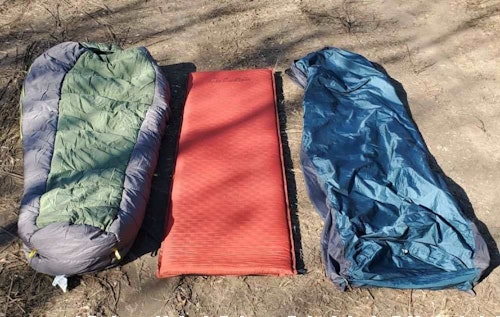
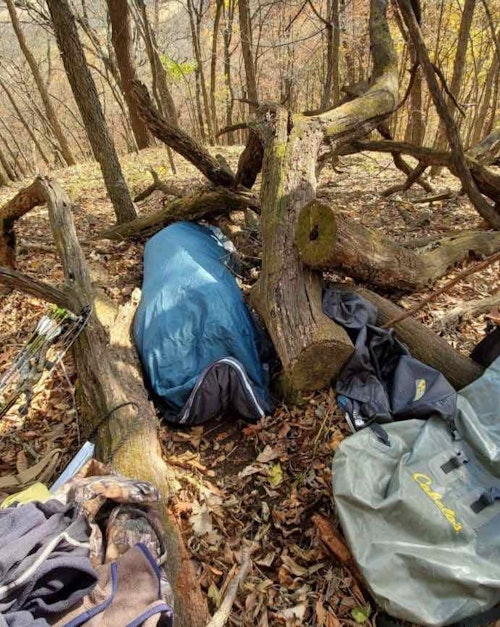
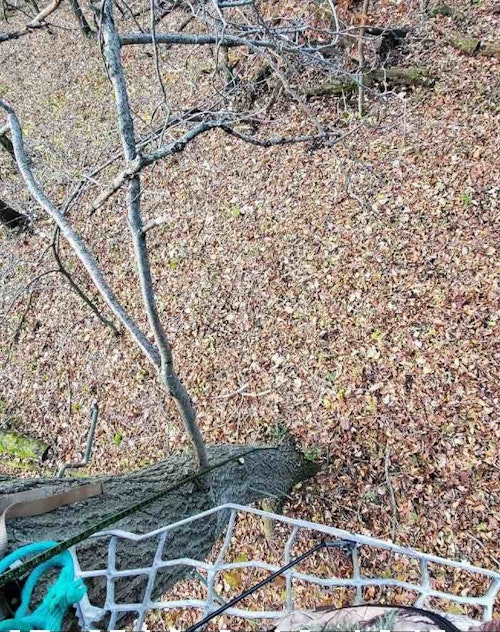
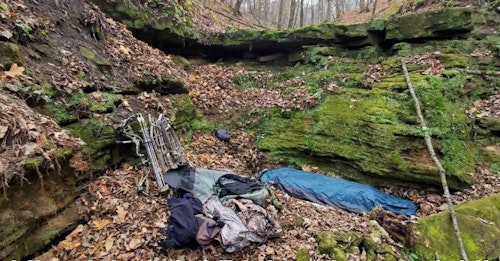

Of course, many of Winke’s Instagram followers had questions about his spartan camping system, and he was detailed in his responses. Many hunters asked about where he slept in relation to his treestand. “I try to sleep as close as I can to the tree while still trying to stay downwind of the places the deer travel.”
Winke said his closest camp was only 20 feet from his treestand tree. “In other spots I can get a bit farther away, but it can be tough to find a spot flat enough to sleep but with cover. Fallen trees work really well. Keep you from rolling down the hill and offer concealment.” When his camp was very close to his treestand, Winke did his best to hide it under sticks, branches and leaves.
“You need to find a place downwind of your stand where the deer aren't likely to go,” he wrote. “Might not work in your situation. Where I hunt, the deer leave these areas about an hour before dark and don't come back until just before daylight, so they aren't usually around all night.”
As for food, he didn’t eat much. “Cold rations,” he wrote. “Mostly beef or turkey sticks. You need something with fat to stay warm. I didn't take enough water, either. You can get dehydrated pretty easily out there in the cold.”
One hunter asked if it would have been more comfortable and perhaps reduced ground odor by using an insulated hammock. Winke answered: “I think it would be very cold, plus then you get more airborne scent. Tucked in like this, the wind blows right over me, and the bivy sack contains a good bit of scent also. I am placing the camps downwind of my stands and my stands are presumably downwind of where the deer travel, so the chances of a deer hitting the spot and spooking are not real high.”
Of course, having a warm sleeping bag is a must. Winke used one rated for minus 20 degrees, which kept him comfortable when temperatures dipped below freezing and into the high 20s. “I sleep with the ‘hatch’ open,” he wrote. “Be sure to wear a warm stocking hat.”
Regarding Winke’s 2021 success, it’s clear the buck hadn’t caught onto the fact that someone was camping nearby. Winke wrote: “He stood up around 4:00 and slowly followed a doe toward my stand. They were moving slow so I didn't have to stop him for the 40 yard shot. He ran less than 100 yards and piled up.”
Winke used his sleeping system on leased private land, but acknowledged that it would well on public land, too, where legal to do so.
While sleeping in the woods has its advantages, it can certainly be a grind. Winke says the No. 1 negative is extreme boredom. Think about it: With sunrise at approximately 7 a.m. and sunset at 5 p.m., that means you climb down from your treestand after legal hunting time, say 5:30. You quietly walk 20 to 100 feet to your “camp,” slip out of heavy hunting clothes, stuff them in a dry bag, then climb into your sleeping bag. It’s now 5:45. You eat a little bit for dinner, check your phone for urgent emails or text messages, then wait for morning. It’s 6 p.m., and you don’t need to dress for the next day’s hunt until 6 a.m. That’s 12 hours in your sleeping bag.
It’ll be interesting to see whether this technique catches on with diehard deer hunters. It’s certainly not for everyone.





